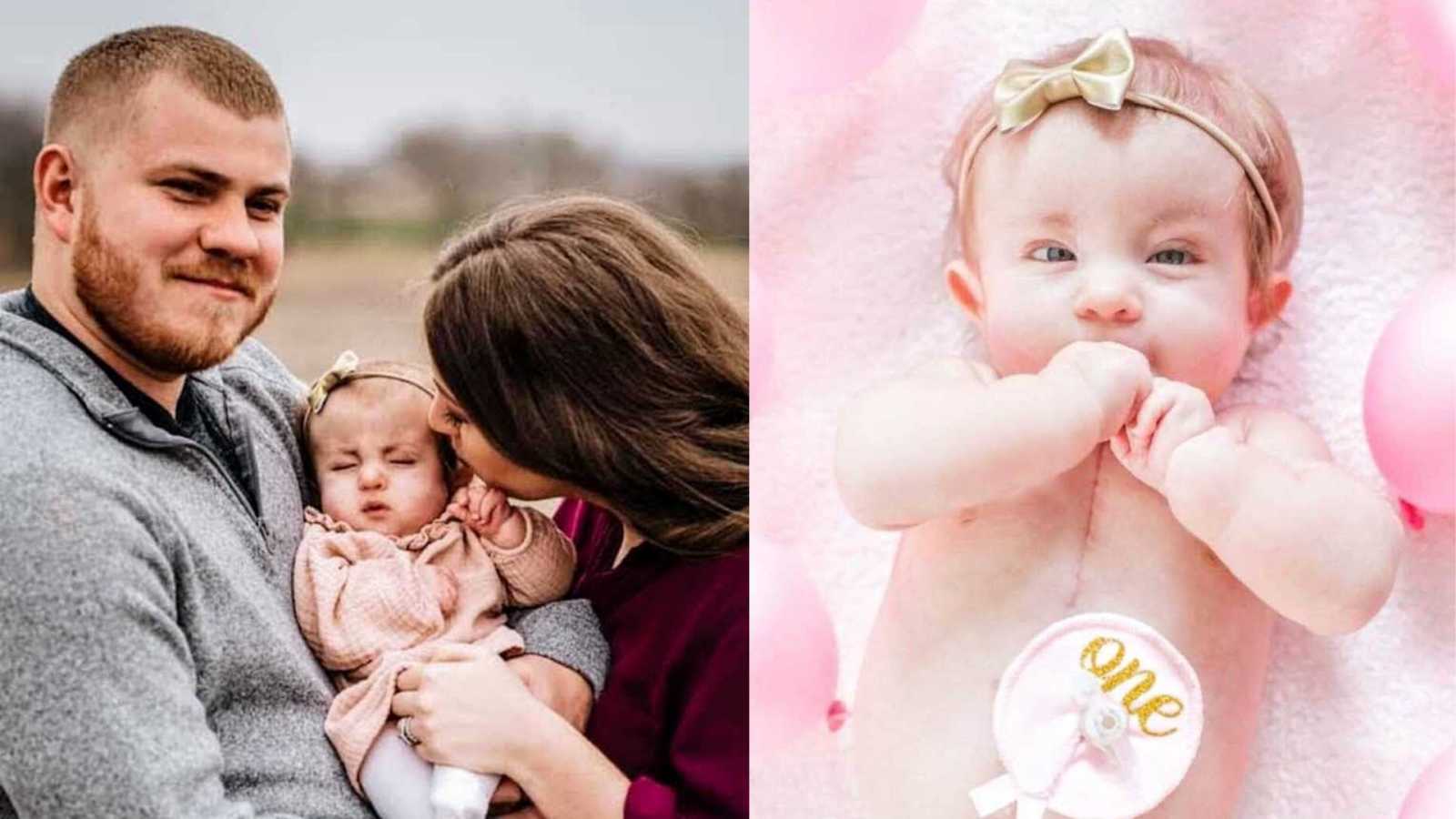“In January 2017, my first pregnancy ended in a miscarriage at 10 weeks gestation. My husband and I were devastated. We immediately started trying again and became pregnant six months later. There were so many mixed emotions when we saw the positive pregnancy test. We were so happy to be pregnant but scared of having another miscarriage. We had our first OB appointment at 9 weeks and heard a beautiful heartbeat, something we didn’t get to experience with our first pregnancy. We decided to do genetic screening to find out what our chances were for miscarrying again. We were also ready to find out the gender.
When I was 14 weeks pregnant, I received a call from my doctor. ‘I’m sorry, but your test results show a high possibility that the baby will have Trisomy 18.’ I wasn’t sure what Trisomy 18 was so I asked her if it was similar to Trisomy 21 (Down syndrome). She replied, ‘No, most pregnancies that have a Trisomy 18 diagnosis do not make it full term and if the baby is born alive, they only live a few days… a week at most.’ She told me not to Google Trisomy 18 because of all of the horror stories about the diagnosis. Before she hung up, I asked her if she knew what the gender was. She said, ‘Yes, it is a girl.’ I hung up and immediately called my husband. I told him our baby wasn’t going to make it. ‘Our baby is going to die.’ When he got home, I told him the baby was a girl and we hugged and cried for hours.
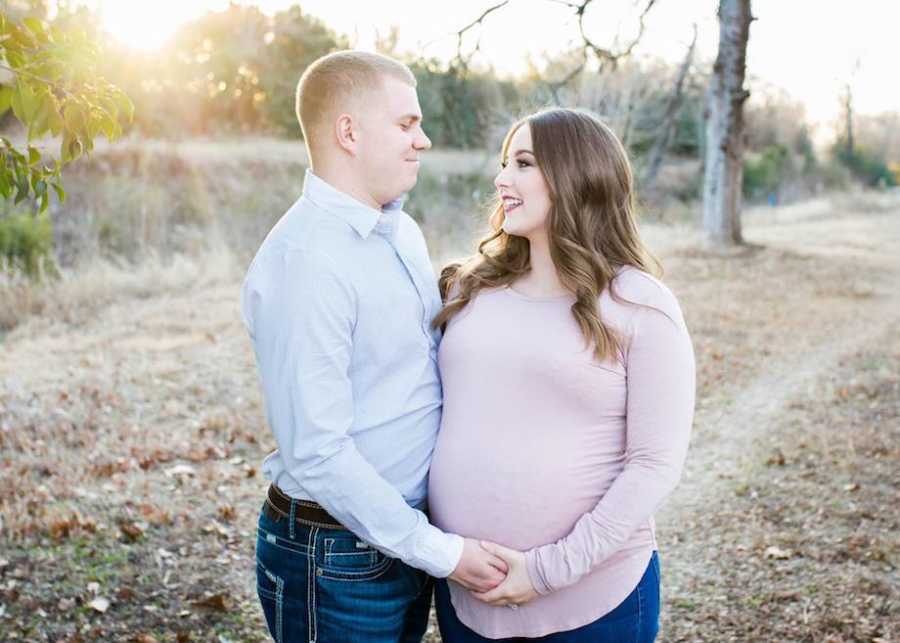
We started seeing an MFM (Maternal Fetal Medicine doctor) at 16-weeks. It was still too early to see anything on an ultrasound. We asked him if he had any patients with a T18 diagnosis. He said, ‘Yes, but the few babies that were born alive only lived a couple of days. One lived to be two-weeks-old.’ We went back for our anatomy scan at 20-weeks. Our perfect daughter had every possible marker relating to Trisomy 18.
Based on the anatomy scan, we could see a hole in her heart, HLHS, fluid on the brain, clenched hands, rocker bottom feet, microcephaly, and she was measuring small. Our MFM gave us our options for abortion and we decline. He respected our decision. We left that appointment in tears. At our 27-week ultrasound, we had a pediatric cardiologist examine our daughter’s heart. The cardiologist left and 20 minutes later, she walked back in with the MFM. ‘We can’t find any markers.’ They told us they couldn’t see any holes in her heart and all of her other markers disappeared. Her hands still looked clenched but a lot of babies keep their hands closed in utero. She looked perfect. My MFM told us he was concerned there might be something else wrong and they could be looking in the wrong places. Having a positive genetic screening worried him. We all decided it was best to do an amniocentesis. A few days later, we got the results. Positive for Trisomy 18. My husband and I were lost and confused. Our daughter looked perfect on ultrasound but the test says otherwise.
At 34-weeks, we had our last ultrasound and everything looked the same. We decided to go ahead and meet with the NICU team and prepare them for all of the unknowns. I wrote a birth plan that including every option: if the baby is born alive and needs support, if the baby is stillborn. We talked to a Comfort Care team and the hospital chaplain to discuss what needed to happen if we had to let our baby go. My husband and I talked for days about what we wanted if she was stillborn or passed away within the first couple of days. We decided we wanted her to be cremated. At 39-weeks, I had my last OB appointment. My OB asked for our wishes so she knew what we personally wanted. We told her we want the chance to meet our daughter, alive.
On February 15th, 2018, I was induced at 5 a.m. that morning. I spent most of the day walking around and doing what I could to speed up labor. By 7:30 that evening, I had not progressed. My doctor decided to break my water to activate labor. Within 30 minutes, my daughter’s heart rate dropped significantly two times. On the third drop, my doctor called in her team and we decided it was best to do a C-section. At 9:19 p.m., Harper Abigale Johnston was born. I didn’t hear her cry, in fact, I didn’t even know she was out. A nurse took my husband over to see her. Within the first couple of minutes, Harper turned blue so they gave her some oxygen and quickly brought her over so I could see her. She was tiny. Before my husband left to follow her to the NICU, I asked him if her hands were clenched (a marker for T18). He said yes.
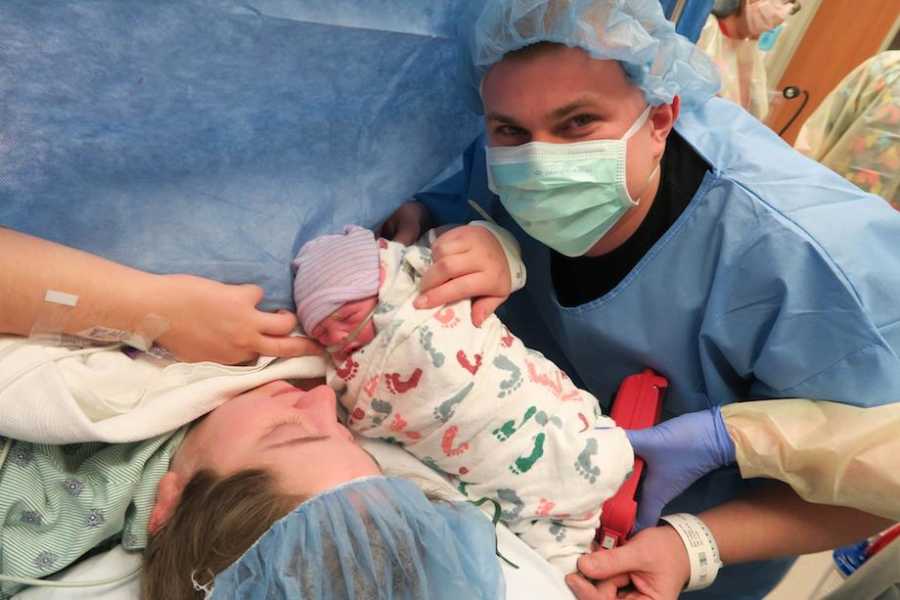
Harper weighed 4 pounds 11 ounces and she was 17 inches long. She was born with three VSDs, one ASD, her PDA was still opened, a TE fistula, and overlapping-clenched hands. When I was able to bear weight on my legs, I begged to go see her and my husband was able to wheel me to the NICU. Wires were connected to her everywhere, she had a suction tube and og tube down her mouth, and nasal cannula around her nose. The next few days were crucial. Harper had the TE fistula repaired when she was three days old. The surgeon came out and said it was a success. My tiny, 5-pound, beautiful baby girl underwent her first surgery. She would have many more to come.
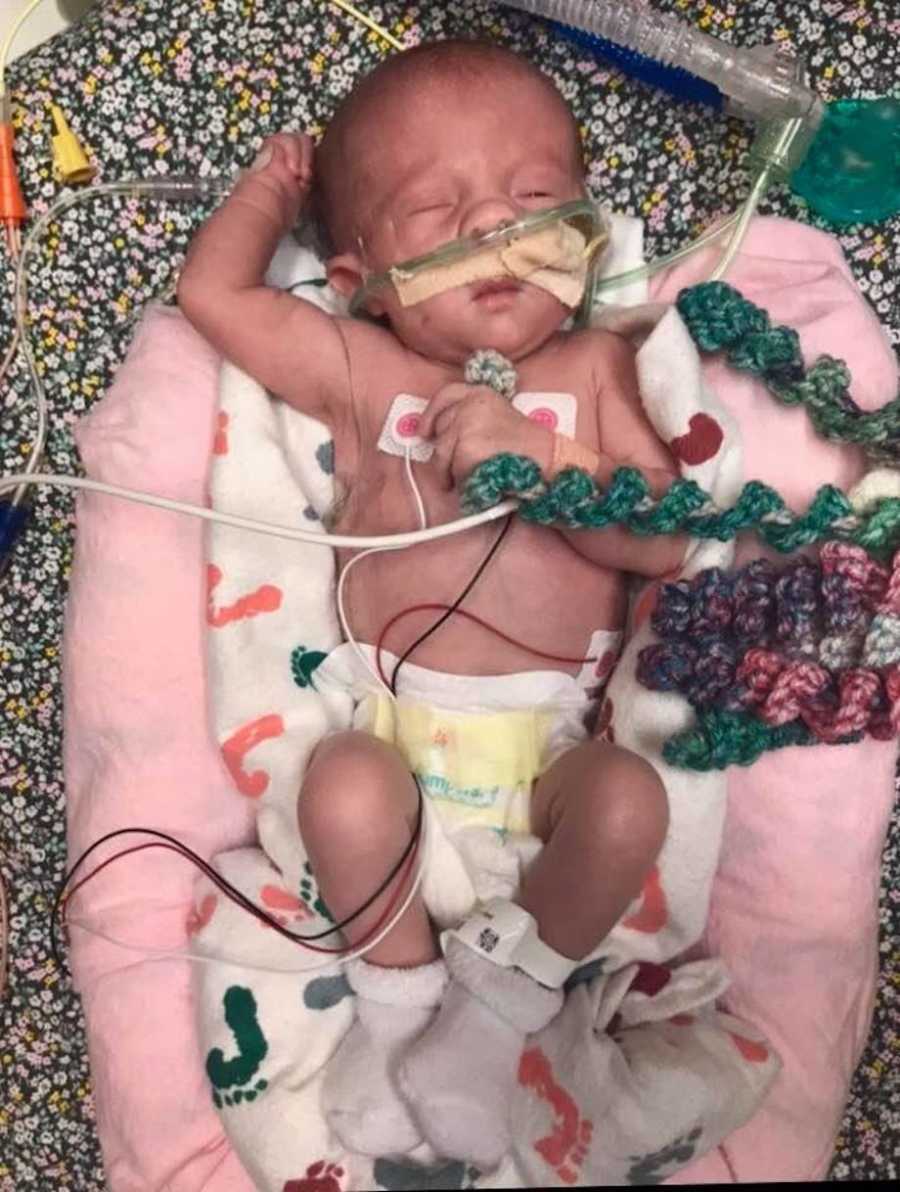
Harper was discharged from the hospital when she was three weeks old. It was a bittersweet but terrifying feeling. In the NICU, a nurse was watching her 24/7. It’s completely different when you get home. We loaded our car up with our baby in her car seat, feeding pump, IV pole, pulse ox monitor, oxygen tanks, and a portable oxygen concentrator. But a week later, we were back in the hospital, Harper’s retractions were awful. We spent 10 days in the PICU and determined Harper needed Lasix to help with the extra fluid in her heart. Several cardiologists looked her chart over and didn’t think surgery was necessary. They wanted to wait until she was much bigger and healthier. So, we waited.
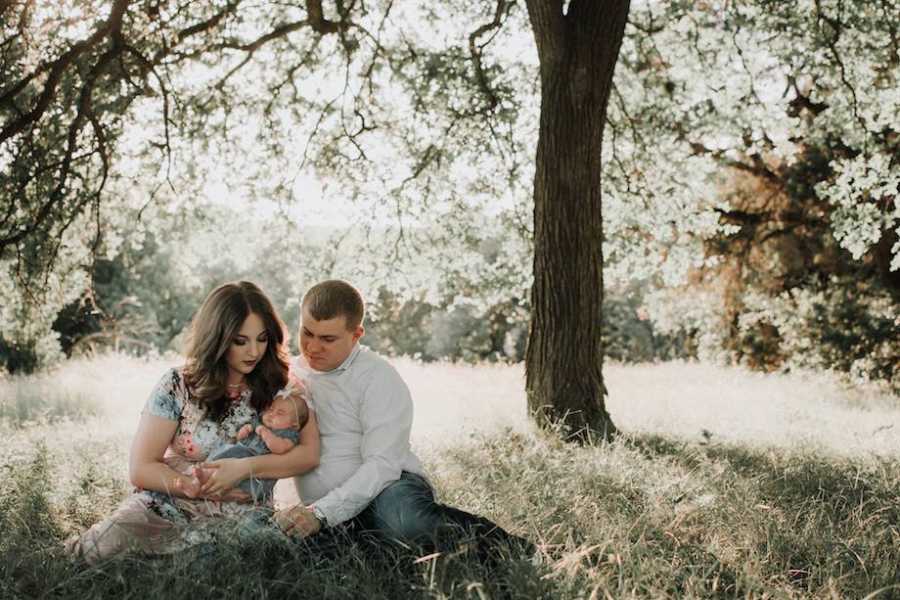


On April 12, 2018, when Harper was two months old, she had a g-tube placed and her esophagus dilated. Harper’s esophagus was a third of the size of a typical baby’s esophagus. She had two more dilations over the next two months. After the third one, the doctor felt like she wouldn’t need anymore and her esophagus would widen as she gets bigger. That summer, Harper cried, a lot. We tried everything we could think of. We switched her formula, gave her Tylenol and Motrin, took her to a chiropractor, and our last resort was putting her on Gabapentin. Her doctors thought maybe she was experiencing neurological pain. Babies with Trisomy 18 can have sensory overload and they thought that was what she was experiencing. She continued to cry, but not as much.
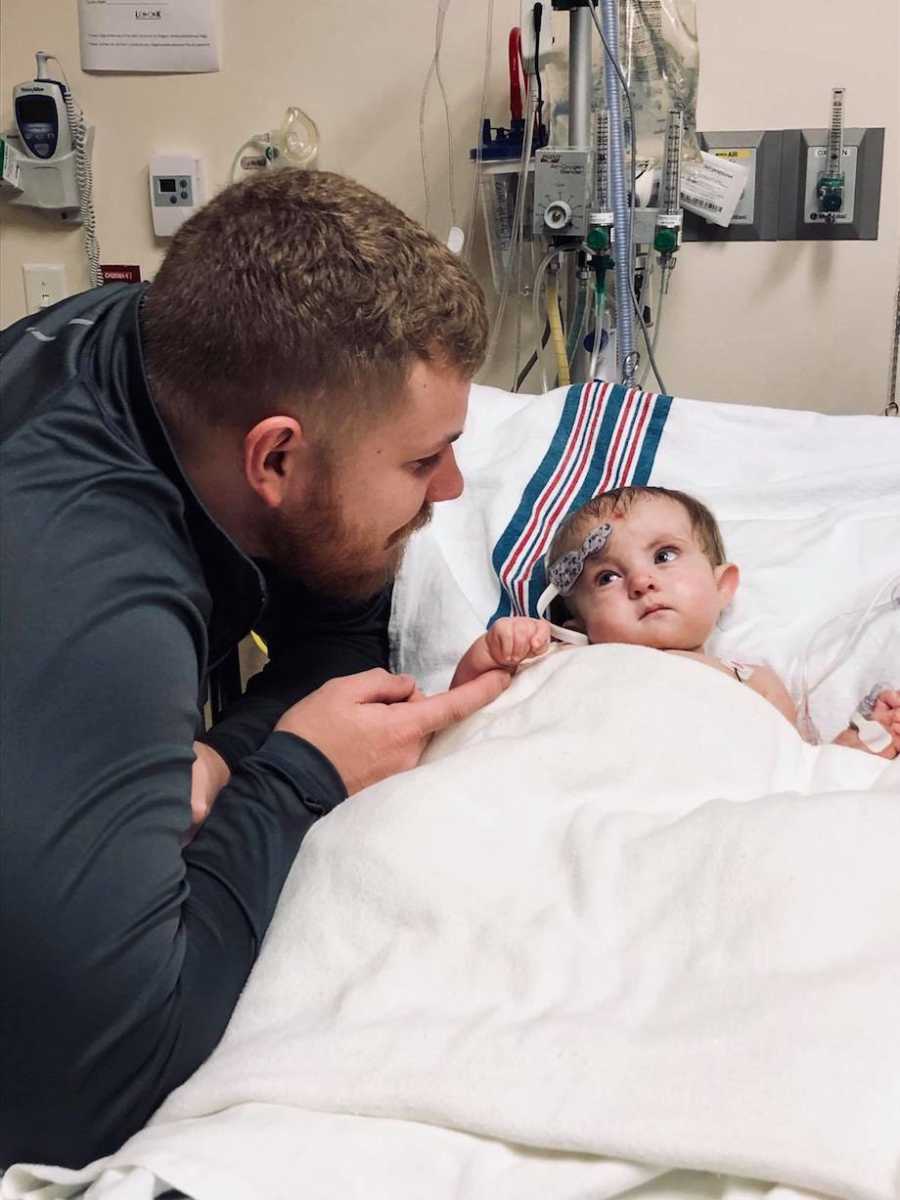

Then in October 2018, Harper got sick. She sounded really congested and was running a slight fever. We had to increase her oxygen so we decided to take her to the hospital. The doctors thought she had the flu with the amount of fluid in her lungs. Once Harper was strong enough, we were able to go home to ride the rest of its course. But three weeks later, we were at the hospital again for the same reason. Our local hospital decided to transport us to a larger hospital in Austin. They have a lot more doctors who are familiar with Trisomy 18. The doctors in Austin thought the same thing though, she probably has the flu or some type of virus and just needs some time to ride it out. But something didn’t seem right. She has had the flu/virus for a month now. We were discharged about a week later.
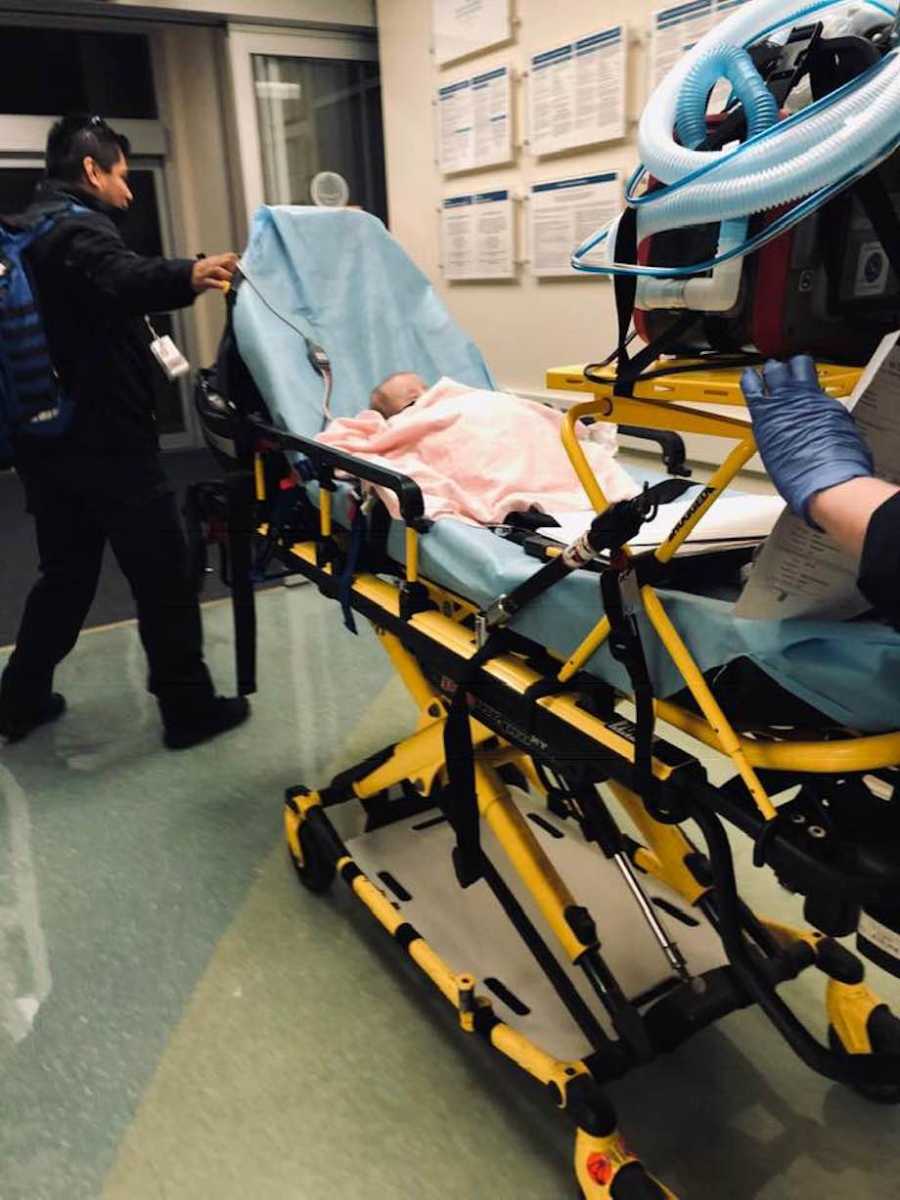
On November 30th, we went back to the hospital not knowing we would be there for a month. Harper had the same symptoms but her retractions were worse. Her body was blotchy and she couldn’t catch her breath. We were immediately transferred to the hospital in Austin. The first night we were there, Harper’s O2 saturation went down into the teens. Her left lung collapsed and they had to bag her to bring her O2 back up. They put her on BIPAP to open up her lungs. She remained stable the following week. The doctors did a bronchoscopy and found out she has Vocal Cord Paralysis on her left side, which is why her left lung collapsed. Then on December 8th, Harper ran a fever of 106 degrees. Her belly was distended and she was completely miserable. We begged the doctors to do something. We tried cooling her down and gave her medicine. Nothing worked. The doctors decided to intubate her to give her body a break. We thought we were going to lose her.

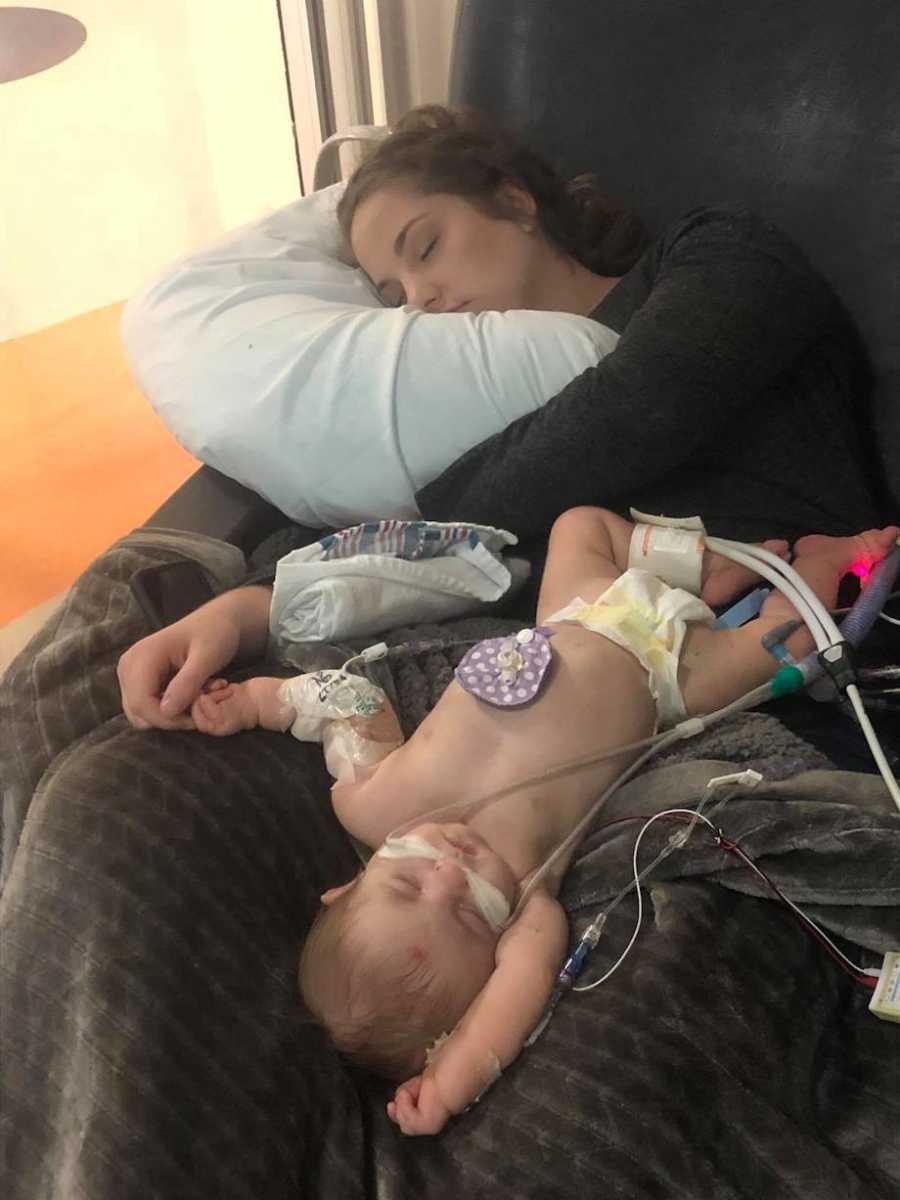
Her fever came down the next day and they were able to extubate her the following day. We asked the doctors what was going on. They were puzzled. They didn’t know what was going on. A neurologist ran some tests but couldn’t pinpoint what was wrong. We asked if it could be her heart but they said the holes in her heart weren’t that bad. But on December 19th, the cardiologists decided to do a heart cath to take a closer look at her heart. They found out the complete opposite of what they thought. Her heart was doing a lot of damage to her little body. The immediately put her on the list for open-heart surgery.
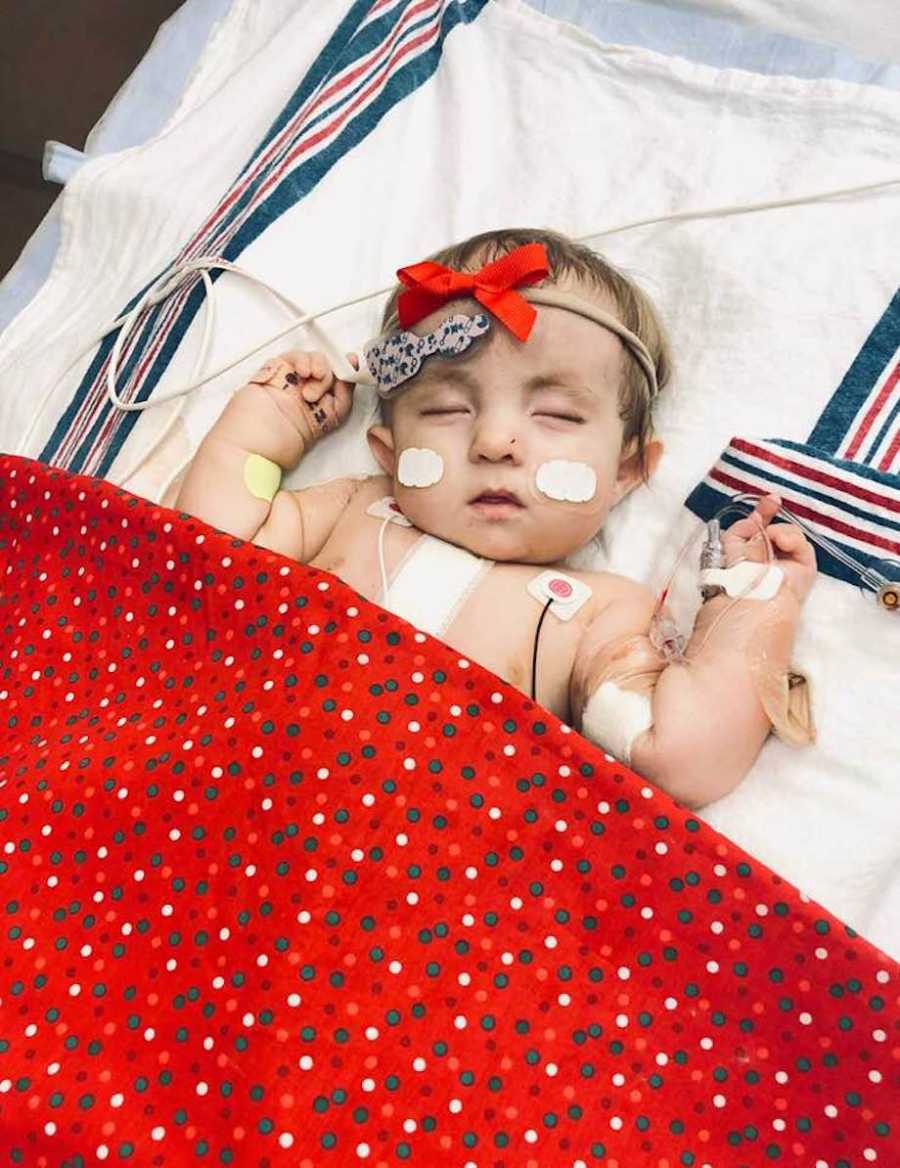
On December 24th, Harper had open-heart surgery. The cardiac surgeon came out four hours later and said the surgery was a success. He was able to close up all of the major holes. He couldn’t get to the two smaller VSDs, but he felt very confident they would close on their own. Harper was extubated that evening and off oxygen completely within 48 hours. We were discharged from the hospital just in time to celebrate the New Year, or so we thought. On New Year’s Day, Harper began having seizures which caused her to stop breathing. We rushed to our local hospital and we were put on a helicopter to transfer us to the hospital in Austin. The doctors were able to control her seizures with Keppra and we were sent home about a week later.

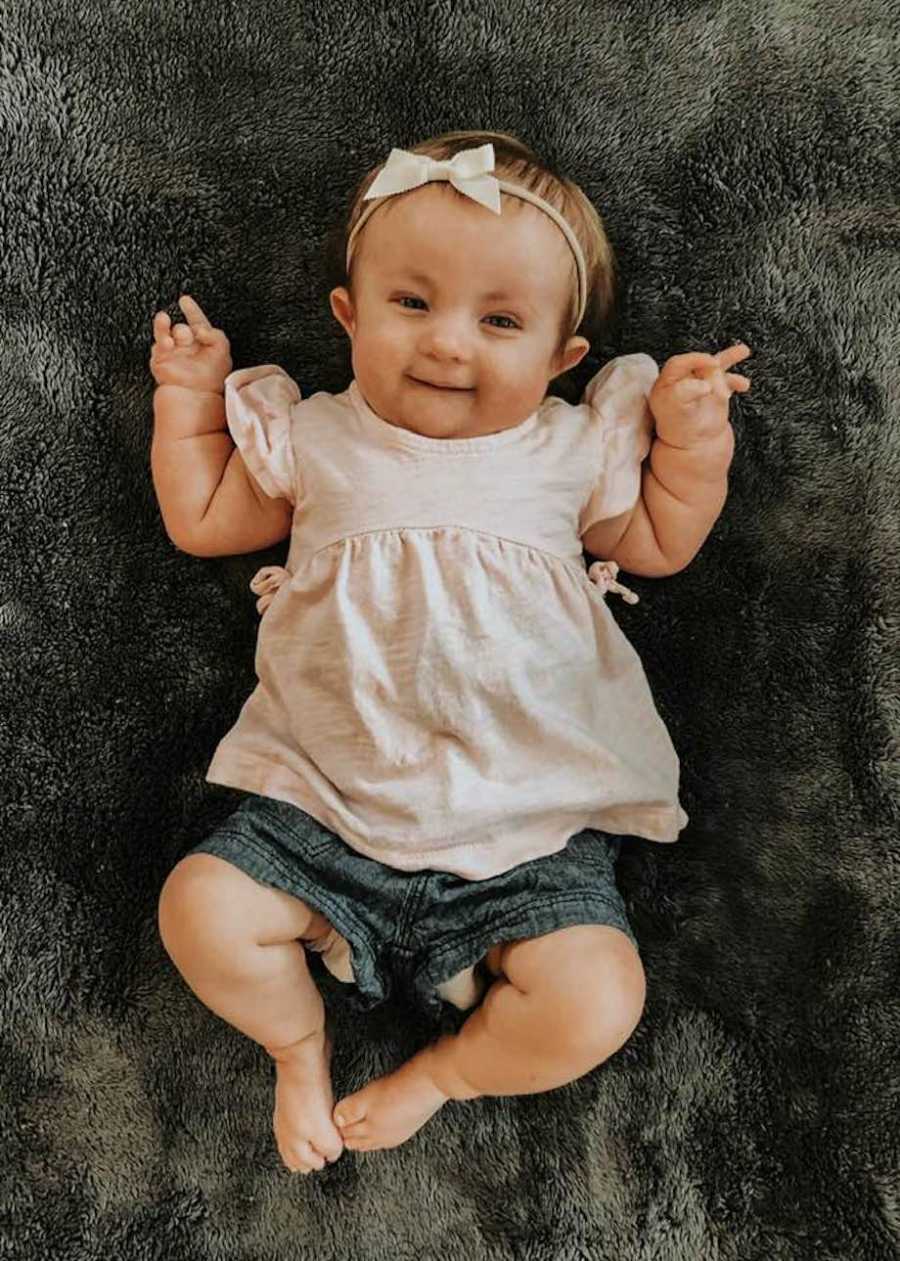
On February 15th, 2019, we celebrated Harper’s first birthday. She had a 1% chance of making it that far. It was such a bittersweet moment, especially after everything she went through. She had seven surgeries and spent fourth of her first year of life in the hospital. Now, as I am typing this, it is June 2020. Harper will be 2.5 years old in just a few months. She is healthy and thriving. Since January 2019, Harper has had one ER visit, a one-night hospitalization, and one surgery/procedure. She is also off all medications. I would say that is a win compared to her first year.

When we found first found out about Harper’s diagnosis when I was 14 weeks pregnant, we thought she would pass before giving birth. When she was born, we didn’t know how long we would have with her. So, we waited. We waited every day. But then she had open heart surgery and now, we no longer wait. We live, Harper lives. We see therapists help her reach milestones and we push her every day. She loves to be tickled and lights up every time she sees us. Harper has Trisomy 18 and she is thriving.”

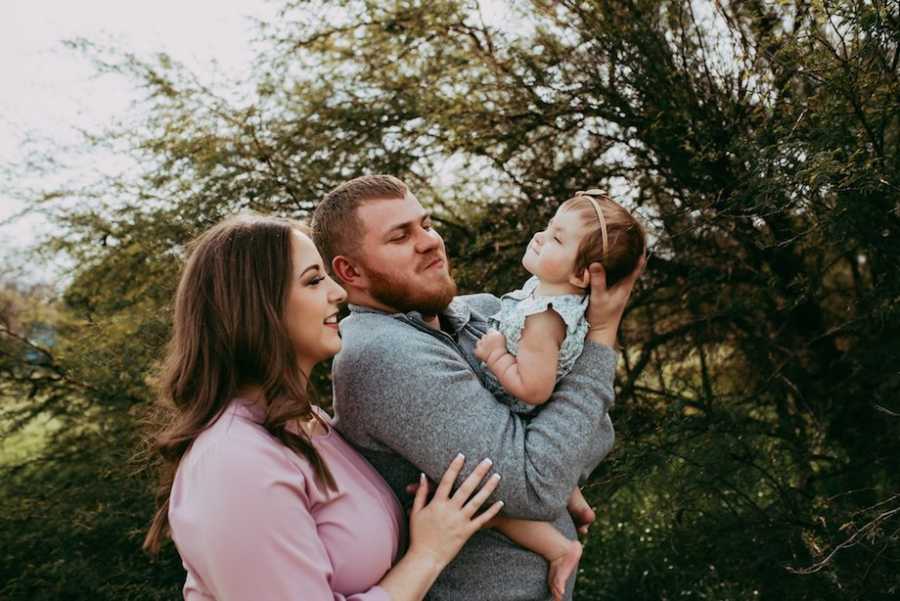
This story was submitted to Love What Matters by Haley and Dillon Johnston from Austin, TX. You can follow their journey on Instagram and Facebook. Do you have a similar experience? We’d like to hear your important journey. Submit your own story here. Be sure to subscribe to our free email newsletter for our best stories, and YouTube for our best videos.
Read more touching stories like this:
Provide hope for someone struggling. SHARE this story on Facebook to let them know a community of support is available.

